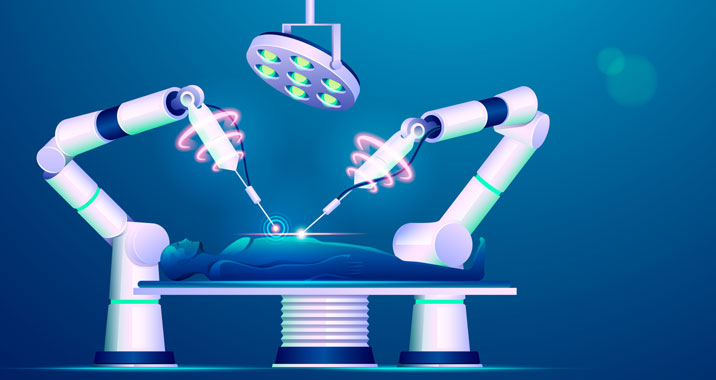Robotic Process Automation in Healthcare
Robotic Process Automation as the name suggest is the process of developing, implementing and maintaining an automation system within a specific industry. Robotic Process Automation (RPA) has been designed and implemented in different industries uniquely. The process must be well curated to address the business needs as well as maintain design features that enables integration and interoperability. Further the systems should improve on the ease of work by adjusting the human resource needs of a business. While Robotic Process Automation has defined advantages in different industries there are a number of general advantages that are observable by simply implementing a RPA. Some of the overall advantages of developing and implementing a robotic process automation are;
a. Reduced costs
b. Improved efficiency
c. Improved accountability
d. Reduction/elimination of human error
e. Improved/advanced supply chain management
f. Improved team work/employee morale
g. Improvement in control and compliance of the entire systems and
h. improving safety and quality
While the above applies to majority of the industries, there are a number of advantages that are observed in industry specific cases. Such is the case in the healthcare industry. The healthcare industry is one dubbed with a huge workload of transactions in terms of insurance claims, appointment scheduling and management, inventory management, supply chain management as well as patient file generation and management. An RPA implementation is one of the best methodologies to manage the above transaction challenges. While resolving the same, the RPA presents the users with other advantages and disadvantages.

Organizational Structuring
Planning/development, implementing and maintaining a RPA are all equally important. The different development stages are easily quantifiable in the practicability of a system. This therefore means that the management as well as the different stakeholders must work in tandem with the development team in all stages of the Robotic Automation Process. This ensures that all issues are ironed out while impending challenges are well documented and scheduled for resolve/articulation in the future builds.
RPA Development

The development of an RPA must be sequential. This ensures critical success factors are reviewed and developed in the systems. The sequential process must start with a proof of concept. This enables all involved parties to contribute effectively to the build process. Beyond the proof of concept, the development team must ensure all stakeholders are well versed with the different features being incorporated into the system. This in-part ensures that the implementation of the RDA is simplified and professional. It is worth noting, the Robotic Process Automation is considered a maturing process. This means that the advantages and disadvantages of a typical system will be discovered and rediscovered over time.
Health Sector RPA Implementation
The implementation of RPA in the health sector has progressed over the years. This has taken effect through the implementation of both frontend, middleware, and backend systems. These systems are well curated to improve the overall efficiency of health services. This can be attributed to a number of integrated systems that seek to address the following factors;
Privacy and data security. The health sector worldwide is governed by doctor-patient confidentiality. While the Information Technology industry has had its challenges with data security it certainly raises the bar as far as privacy is a concern. By issuing IDs to improve on anonymity, encrypting data among other technical features, RPA can be used to guarantee data security. This is a critical feature that improves on the applicability of the systems in different health sectors.
Monitoring of payments and claims. According to a study conducted by LIMRA in 2018, about six percent of American population is covered by a life insurance policy. This number is close to the estimated 266.89 million life insurance policies in place in the United States (Rudden, 2019). In Europe, the Aggregate deal value — insurance broking business in USD is 7 billion according to a study conducted by 2020 Europe Insurance Outlook (2020 Europe Insurance Outlook, 2020). This, therefore, illustrates the importance of having an RPA that eases the monitoring of payments and management of claims. This further improves on accountability of resources.
Appointments Management. Appointments is a regular and important aspect of outpatients all over the world. In order to access medical care procedurally, outpatients must book appointments, cancel or reschedule with ease. This, therefore, requires the implementation of an RPA. Not only does this work for the patient it also enables the physicians to schedule their work properly, hence informing the patients of available slots and schedule examinations and surgery. Appointments management further enables the health facility to save on costs associated with canceled appointments. This is achieved through improved efficiency at the organization.
Record Keeping. One of the defining factors of any technical system is its ability to collect process and store data. Robotic Process Automation must take into account recording keeping. This includes the collection of a patient’s records from different examinations office, processing the same during medical visits, and storing the same in a centralized system. This should enable the physician as well as the patient to access the same where necessary and utilizing the same to make conclusive decisions. This, therefore, calls for the development of an integrated system that will ease data sharing and security. Beyond this, an RPA reduces the chances of human error while processing patient information.
Transparency. The health industry faces management challenges like every other industry. A health facility therefore must acquisition and implement systems that enable them to monitor the supply chain. This can be achieved through the implementation of a real-time reporting and analysis system. This ensures all the stakeholders are well aware of the health center’s operations. It further enables the business to comply with necessary rules and regulations. This functionality can be implemented through a number of system designs. One of the proven concepts is the use of a single source of entry.
Scalable. The development of a scalable system is a requirement in system development in the current economic environment. In the health sector especially scalability is a critical requirement. As observed in the recent coronavirus pandemic, health systems were required to accommodate a sudden influx of patients with COVID-19 symptoms and infections. Scalability can further be attributed to on-demand resources that all health facilities require in order to respond to emergencies.
Healthcare Organizations, must therefore ensure the robotic processes are well curated to provide resources on-demand to both the front offices for administrations as well as the back office for all examinations and treatments. This is done to ensure the business processes are well-structured to meet the demand of the organization and be able to adapt to new requirements in the health industry. Considering the need for an integrated system, single sources of information, data safety and privacy guarantee, efficiency among other business needs, Robotic Process Automation is turning out to be a must-have solution.
Share This Post:

